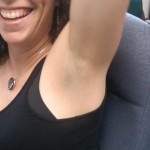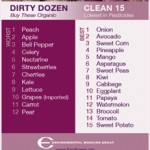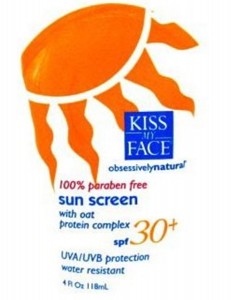 Skin is the largest organ of the human body, which is why we should be more thoughtful when we slather, coat, and camouflage it. People have been using cosmetics for thousands of years, yet the cosmetic industry is one of the least regulated industries in the United States. Lack of regulation could be why a large number of cosmetic products contain lead, formaldehyde, parabens, and phthalates. Since our bloodstream absorbs up to 60% of the products we apply to our skin, we should all be aware of what we’re putting into our bodies.
Skin is the largest organ of the human body, which is why we should be more thoughtful when we slather, coat, and camouflage it. People have been using cosmetics for thousands of years, yet the cosmetic industry is one of the least regulated industries in the United States. Lack of regulation could be why a large number of cosmetic products contain lead, formaldehyde, parabens, and phthalates. Since our bloodstream absorbs up to 60% of the products we apply to our skin, we should all be aware of what we’re putting into our bodies.
Currently, cosmetics and personal care products are not required to undergo testing in the United States, and their effects on human health are not monitored. An independent study in 2007 by the Campaign for Safe Cosmetics revealed that 61% of the 33 lipsticks they tested contained lead—up to 0.65 parts per million. The Campaign for Safe Cosmetics challenged the FDA to conduct its own test. Two year’s later the results were in, revealing lead in 100% of the lipsticks tested by the FDA. The CDC states that there is no safe level of lead exposure, and yet, because of the lack of regulation, the average lipstick wearer will ingest 6 to 10 pounds of lipstick over the course of her lifetime, through regular application and wear.
Nail polish isn’t any better than lipstick. For at least a decade we’ve known that nail polish contains phthalates, which are linked to problems with male reproductive health. Both diethylhexyl and dibutyl, phthalates commonly found in U.S. cosmetics, have been banned in Europe due to safety concerns but are perfectly legal here. Nail polish also contains other harmful chemicals including toluene, formaldehyde, and dibutyl phthalate, chemicals all linked to cancer and birth defects.
What can be done to keep these toxic ingredients out of our personal care products? Legislation has been introduced in some states to ensure safe cosmetic legislation, but something needs to be passed at the federal level. Until that happens, it is essential for us consumers to be conscious of the ingredients and potential health effects in our cosmetics. Because researching safe cosmetics can be overwhelming we’ve provided a couple of websites to help navigate your way:
To learn more about the campaign for safe cosmetics go to: http://www.safecosmetics.org
To search for a product, ingredient, or company go to: http://www.cosmeticsdatabase.com/
To see the top 10 cosmetic toxins to avoid go to: http://www.thegoodhuman.com/2008/05/14/top-10-cosmetic-toxins-to-avoid/





